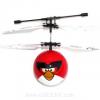- 7 replies
- 3,976 views
- Add Reply
- 3 replies
- 3,307 views
- Add Reply
- 4 replies
- 9,563 views
- Add Reply
- 0 replies
- 1,563 views
- Add Reply
- 1 reply
- 6,992 views
- Add Reply
Sat night imagery

By intertronic,
Hello,
does anyone knows a satellite taking pictures at night with an archive catalog?
ideal is a satellite like AQUA or TERRA taking imagery every day.
regards
M.
TMS in Google Earth
By stefafanonafets,
Hello everybody!
I'd like to see some TMSs in Google Earth, for example this:
http://www.sardegnageoportale.it/index.php?xsl=1598&s=203640&v=2&c=9875&t=1
Maybe it could be helpful this other page:
http://webgis.regione.sardegna.it/manuali/roja/index.php?cat=10v
Thanks in advance!
Stefano.
Android app for viewing shapefiles
By mokukk,
I'm looking for a simple Android app allowing viewing shapefiles offline. Doesn't need to have any editing features, only shp viewer and GPS capabilities. What would be your recomendations for this kind of app?
Civil Engineering Journal: Call for Papers (www.CivileJournal.org))
By civilejournal,


Civil Engineering Journal is a multidisciplinary, an open-access, internationally double-blind peer -reviewed journal concerned with all aspects of civil engineering, which include but are not necessarily restricted to:
Building Materials and Structures, Coastal and Harbor Engineering, Constructions Technology, Constructions Management, Road and Bridge Engineering, Renovation of Buildings, Earthquake Engineering, Environmental Engineering, Geotechnical Engineering, Highway Engineering, Hydrauli
Application of GIS in civil engineering
By alirehman,
Applications of Geographical Information System (GIS) in Civil Engineering
Objectives
Relevant Blog websites
References
Introduction
GIS applications in civil engineering
Landslide hazard zonation
Site selection for solid waste disposal
Site selection for groundwater potential zones
Hurricane wind Analysis
Transportation analysis
Relevant Blog websites
http://www.gisblog.com
http://www.gis-blog.com http://gisfolio.blogspot.com http://opensourcegisblog.blog
-
Forum Statistics
8.7k
Total Topics43.4k
Total Posts




